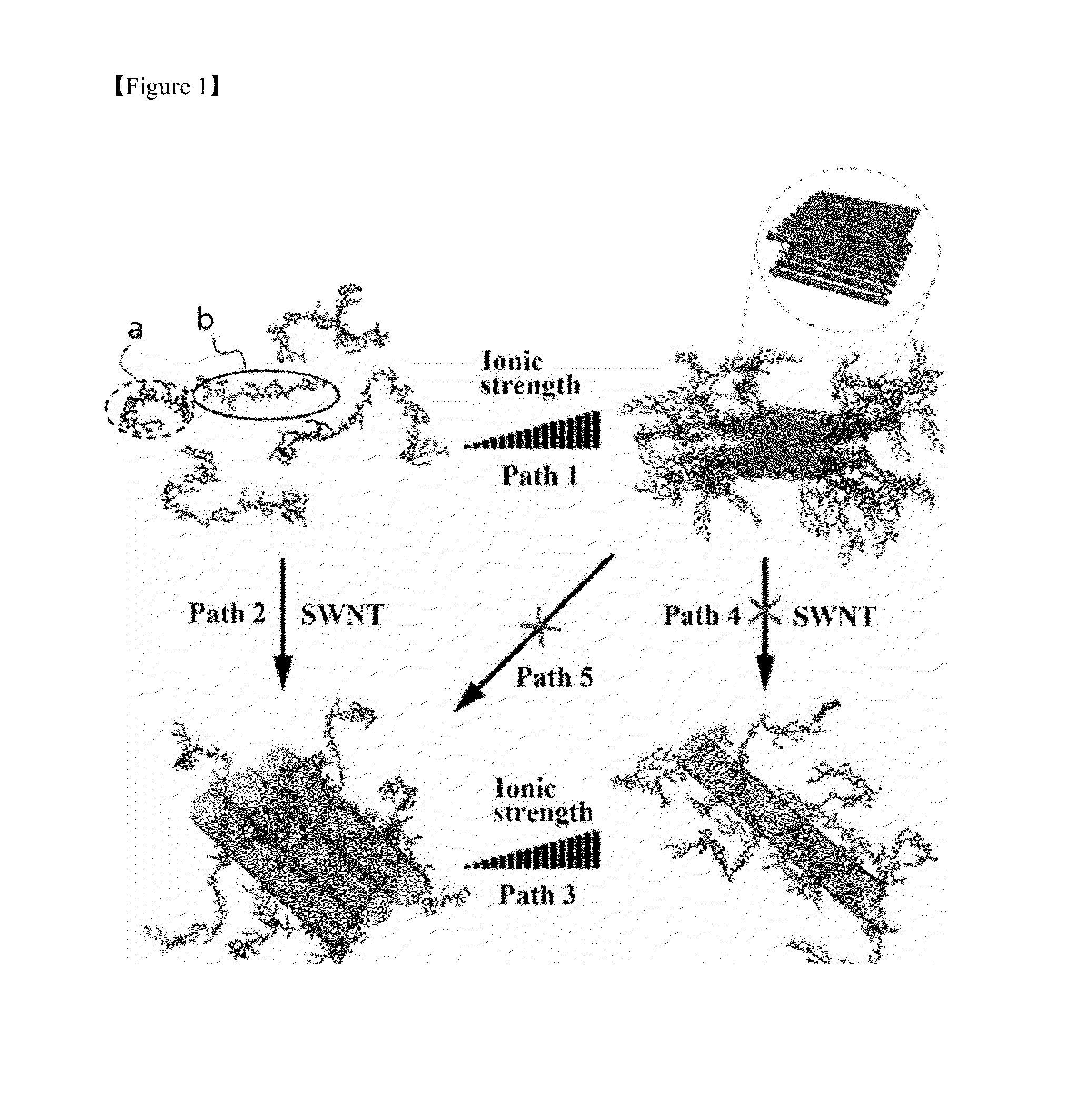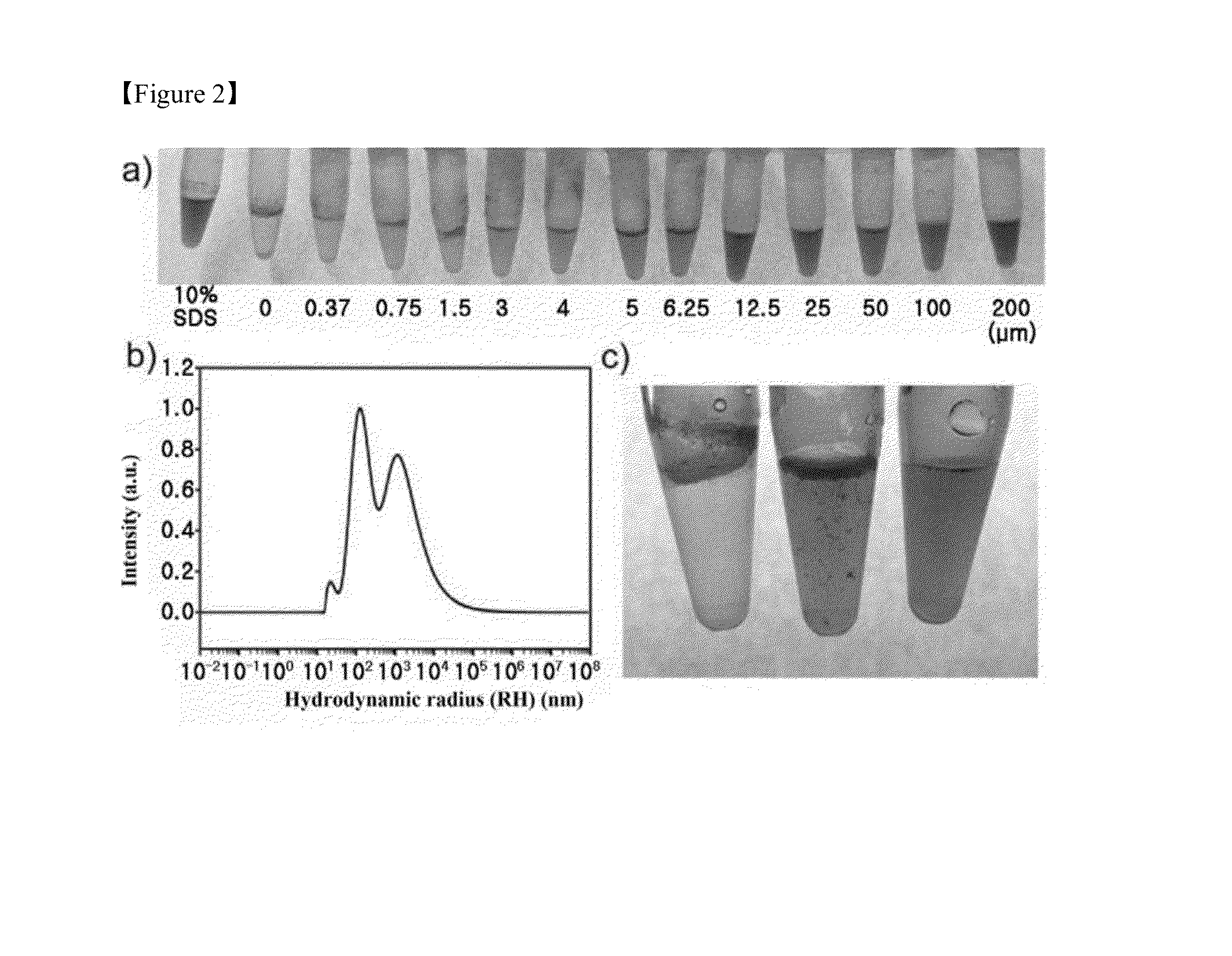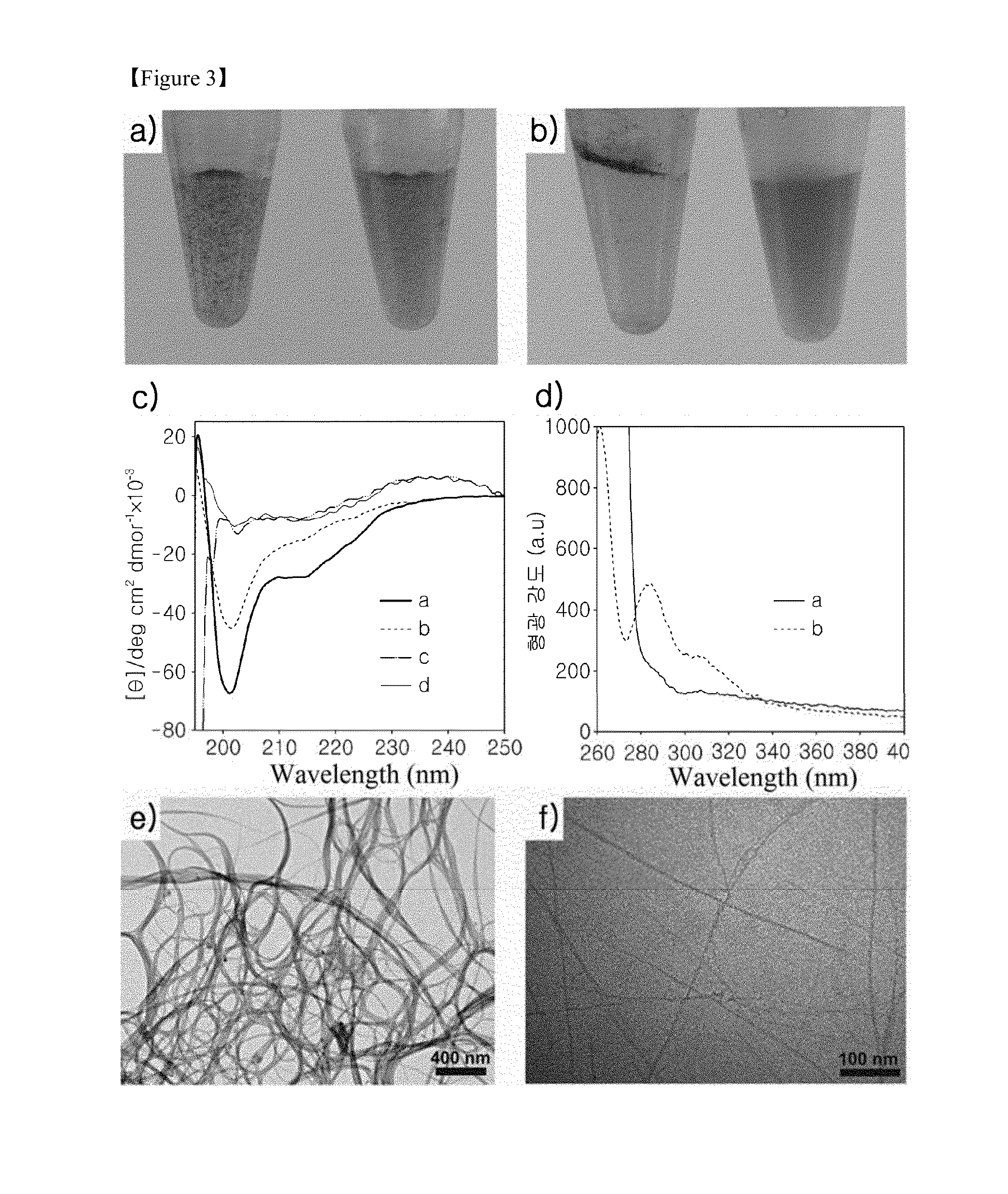Bioactive carbon nanotube composite functionalized with b-sheet polypeptide block copolymer, and preparation method thereof
a bioactive carbon nanotube and polypeptide technology, applied in the field of bioactive carbon nanotube hybrid functionalized with sheet block copolypeptides, can solve the problems of damaging the intrinsic structural and electrical properties of pristine cnts
- Summary
- Abstract
- Description
- Claims
- Application Information
AI Technical Summary
Benefits of technology
Problems solved by technology
Method used
Image
Examples
synthesis example 1
Linear β-Sheet Block Copolypeptide
[0060](1) The peptide was synthesized on Rink Amide MBHA resin LL (Novabiochem) using standard Fmoc protocols, using a Tribute™ peptide synthesizer (Protein Technologies, Inc). Standard amino acid protecting groups were employed for the synthesis. The sequence of the β-sheet block copolypeptide was as follows:
Gly-Arg-Lys-Lys-Arg-Arg-Glu-Arg-Arg-Arg-Pro-Pro-Glu-Ser-Gly-Gly-Phe-Lys-Phe-Glu-Phe-Lys-Phe-Glu-Phe-Lys-Phe-GluorGRKKRRQRRRPPQGSGGFKFEFKFEFKFE
[0061](2) For the synthesis of the peptide with a fluorescent label at the N-terminus, a solution of 5-carboxyfluorescein (5 equivalent), HBTU (4.5 equivalent) and DIPEA (10 equivalent) in 1 mL of N-methyl-2-pyrrolidone (NMP) was added to the resin-bound peptide and reacted overnight. The resin was then successively washed with NMP and acetonitrile and dried in vacuo. The dried resin was treated with a cleavage solution (TFA:TIS:water=95:2.5:2.5) for 3 h and was triturated with t-butyl methyl ether. The p...
experimental example 1
[0073]First, it was confirmed whether this potential β-sheet forming peptide can bind to and then solubilize SWCNTs in pure water. The arc-produced SWCNTs were suspended in tetrahydrofuran (THF) and equal amounts of the SWCNTs (5 μg) were added into microcentrifuge tubes. After THF evaporation, the block copolypeptide solution (0.3 mL) was added and the mixture was subjected to sonication at room temperature for 15 min. As shown in a) and b) of FIG. 2, the SWCNTs became solubilized as the concentration of the peptide increased; most of the SWCNTs were suspended at a peptide concentration of around 12.5 μM (see c) of FIG. 2). This result suggests that phenylalanine residues in the block copolypeptide bind to the SWCNTs via hydrophobic and π-π stacking interactions, and the lysine and arginine-rich hydrophilic segment helps the dissolution of the peptide / SWCNT hybrids by interacting with the aqueous solution (FIG. 1). Zeta-potential (ζ) measurements showed that the peptide / SWCNT hybri...
experimental example 2
[0074]Next, the influence of ionic strength on the peptide / SWCNT hybrid formation was investigated. The β-sheet contents of the block copolypeptide solution increased with increasing NaCl concentration, and the increase reached a plateau at a salt concentration of around 50-60 mM (see FIG. 5). Based on this result, the influence of the ionic strength on the solubilization of the SWCNTs was investigated. This experiment was conducted at a peptide concentration of 5 μM, which was found to be insufficient to solubilize 5 μg of SWCNTs in pure water (the middle image in c) of FIG. 2).
[0075]As shown in a) of FIG. 3 (left), the peptide (5 μM) and SWCNT mixture in pure water revealed the presence of large granules of SWCNTs, indicating their incomplete solubilization. In contrast, the granules became smaller when salt was added (50 mM) and the solution was subjected to a vortex (the right image in a) of FIG. 3). Upon soniciation of both mixtures, a significant difference was evident. The mi...
PUM
| Property | Measurement | Unit |
|---|---|---|
| Fraction | aaaaa | aaaaa |
| Molar density | aaaaa | aaaaa |
| Dispersion potential | aaaaa | aaaaa |
Abstract
Description
Claims
Application Information
 Login to View More
Login to View More - R&D
- Intellectual Property
- Life Sciences
- Materials
- Tech Scout
- Unparalleled Data Quality
- Higher Quality Content
- 60% Fewer Hallucinations
Browse by: Latest US Patents, China's latest patents, Technical Efficacy Thesaurus, Application Domain, Technology Topic, Popular Technical Reports.
© 2025 PatSnap. All rights reserved.Legal|Privacy policy|Modern Slavery Act Transparency Statement|Sitemap|About US| Contact US: help@patsnap.com



